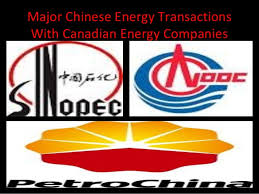
The last few months have seen a great deal of press speculation about Chinese government plans to reform its national oil companies (NOCs) and the NOC’s own plans to attract co-investors. It is still not clear whether the NOCs face wholesale restructuring or just incremental reforms. Either way, the outcomes are far from predictable.
The last big shake-up of China’s oil and gas industry occurred in 1998 when the three major oil companies were restructured, commercialized and, soon afterwards, listed on international stock markets. These moves led to significant internal re-organization and a greater focus on profitability which was rewarded as oil prices rose after 2002. However, these changes in industrial structure were not accompanied by measures to promote competition within the domestic oil and gas markets. As a consequence, the NOCs increased their market power at home, at the expense of smaller Chinese players and foreign investors. This lack of competitive pressure, combined with high oil prices and the weak power of minority shareholders, created fertile ground for rent seeking, corruption, poor capital management and a slowdown in improvements in commercial and technical performance.
As has been widely reported, the current government has announced that it wants the commercial performance of all state-owned enterprises to improve and that companies will be restructured and market rules changed if necessary to reduce monopoly power.
The first move to eat away at the dominance of the NOCs came in 2010, under the previous administration, when the Ministry of Land and Resources classified shale gas as an ‘independent mineral resource’, thereby allowing Chinese companies other than the NOCs to bid for blocks in the licensing rounds held in 2011 and 2012. These rounds led to 21 blocks being awarded to a wide range of Chinese companies. However, their lack of experience in gas exploration has resulted in very little progress being made. Only the NOCs have undertaken substantial exploration programmes for shale gas. In February 2014, the National Energy Administration addressed another source of NOC market power by issuing some general guidelines on the provision of third-party access to oil and gas pipelines. This measure was taken to reduce the obstacles facing independent companies seeking to transmit oil and gas to market, a problem that had already been encountered in the case of coal-bed methane. However, the text was too ambiguous to be enforceable
The same year saw the NOCs respond to pressure from the government to sell assets. Sinopec sold 30% of its oil retail business for RMB 107 billion (US$17.5 billion) to a collection of 25 domestic and foreign investors. PetroChina announced that it would open six lines of business to non-state investors. It created a RMB 40 billion (US$6.5 billion) pipeline joint venture, PetroChina United Pipelines, with two Chinese asset management companies, Taikang Asset Management and Guolian Securities. The deal raised RMB 20 billion for PetroChina whilst the company contributed its pipeline assets in the west of the country. Soon afterwards, PetroChina began to develop partnerships with local companies in Xinjiang to explore and develop shale gas. The year 2014 also saw a slight rise in the number of privately-owned companies winning permits to import crude oil.
Whilst these various steps chip away at the monopoly position of the NOCs, they do so in a very incremental manner. The NOCs remain holders of the resource rights over most of the country’s prospective acreage, control almost all the pipelines and retain a very strong position in oil refining and retail. Only in the relatively new business of gas distribution has the private sector been able to make significant inroads.
Rumours of a possible merger of China’s NOCs started to circulate in February 2015. The take-over of BG by Shell indicates that small and medium-sized oil companies like Sinochem and CNOOC would be vulnerable in a truly competitive environment, and that shareholders might benefit from merger with either PetroChina or Sinopec. CNOOC’s badly-timed acquisition of Nexen, with its expensive Canadian tar sands projects, has undermined this NOC’s well-deserved reputation for commercial savvy. The alternative being floated is a merger between PetroChina and Sinopec, which would produce a company with a capitalization larger than that of ExxonMobil. But a combination of two bloated giants would hardly address the government’s stated concerns, unless it felt that size alone was enough to be competitive in the international market.
More realistic proposals emerged in May of this year. One idea to spin-off all of PetroChina’s and Sinopec’s oil and gas pipelines assets. Whilst sensible in principle, this suggestion faces a number of practical challenges. First, the international shareholders will demand that the companies are paid a fair market value for the pipelines and this could be as much as US$300 billion. Second, the buyers not only have to be able to raise this amount of capital, but they have to be relatively confident that they will gain a reasonable financial return. One of the reasons the NOCs are prepared to sell these assets is that they do not generate much profit. Further, any potential buyer has no idea at present what criteria would be used to set tariffs as no such regulatory regime exists today.
Other proposals under discussion are reported to include requiring the NOCs to sell their oilfield service and manufacturing companies in order to create competition in this sector, forcing the NOCs to relinquish oil and gas exploration acreage that they are not actively engaged in, and further expanding access to oil import permits.
Whilst all of these proposals have merit, following through to yield the full desired effects on the market position of the NOCs will require sustained political and regulatory pressure from the government. Undesirable consequences could include national monopoly power being transferred to local market power which would happen if companies connected to provincial governments gain control of assets. Alternatively, new private owners could still find themselves marginalized through poor regulation by central or provincial government.

